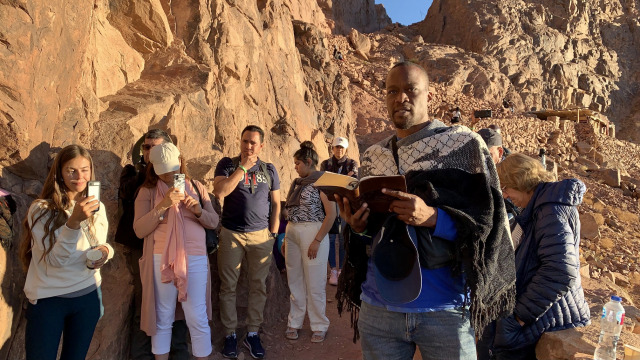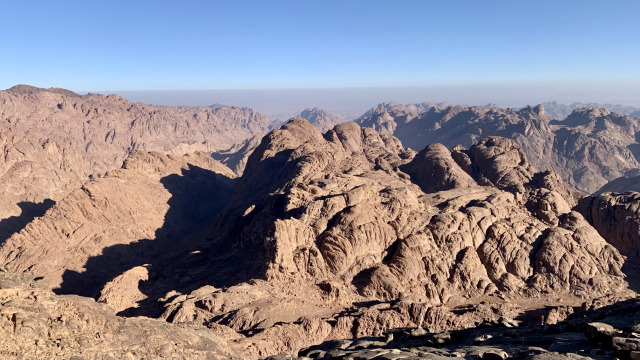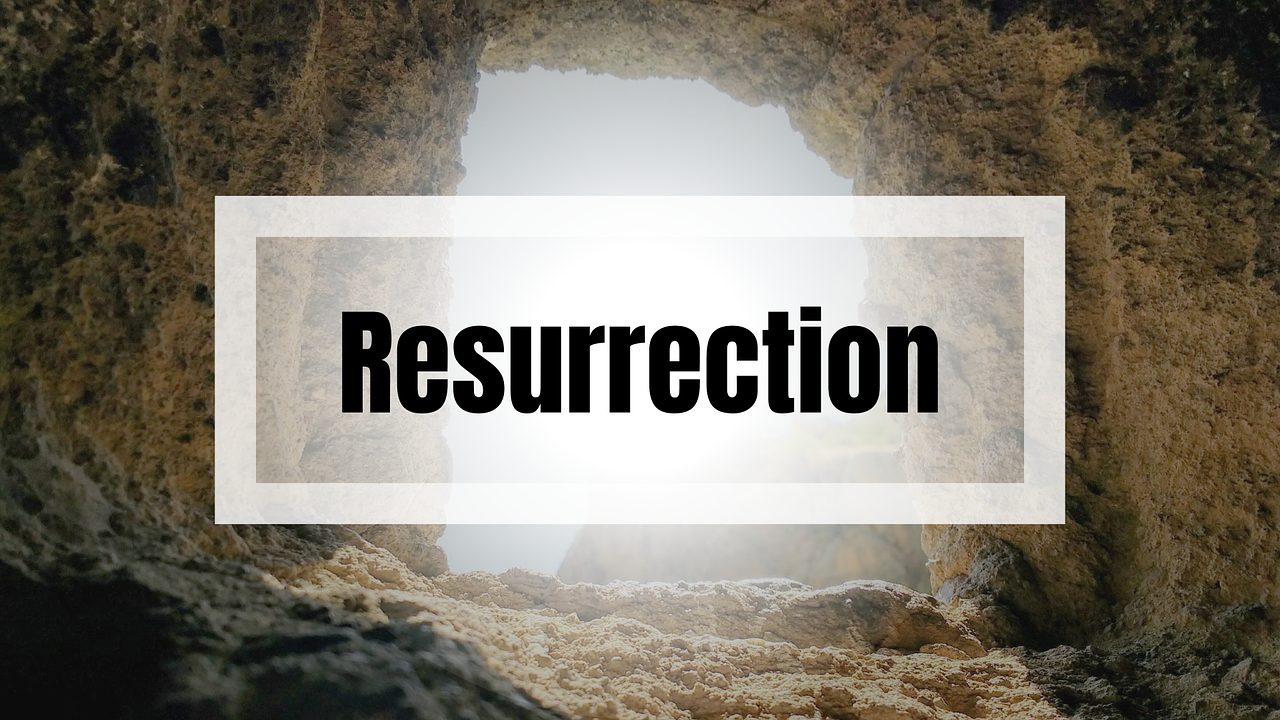By Andy Nash … We wake up at 2:30 a.m.—my daughter and I—more eagerly than we’ve ever woken up at 2:30 a.m.
This is the morning we’ve waited for—we’re climbing Mount Sinai at sunrise.
At 17, Summer knows I’m not the mountain climber she is. “I’m proud of you, Dad,” she says.
“This one is different,” I tell her. “It’s biblical.”
We both laugh.
We attach our head lamps and head out, joining four dozen travelers on our Egypt study tour. Our group is all ages–eight to eighty–just the way I like it, a traveling family, like the Israelites themselves.
Fortunately, we have ready help for the first two hours of our climb. Fifty camels sit steaming in the darkness at the base of the mount, sizing us up along with their Bedouin owners.
The always-awkward experience of mounting a camel is exceeded only by the camel’s sudden rise—a desert roller coaster: a startling dip, and then . . . stateliness. One by one, I hear the gasps, then the delighted laughter, of our travelers. Just wait till the camel drops to its knees again.
In the darkness, we begin the ascent, and I get to . . . rest. On these tours, I’m nearly always working or teaching, so that others can rest, learn, and enjoy the journey. I love nothing more than their contented smiles.
But now and then, I get to rest too—the boat at Galilee, the ferry at Patmos, and now the camel at Sinai (Not far from here, Jethro once reminded Moses about resting).
So here, on Sabbath morning, I let the tranquility wash over me, so grateful to rejuvenate, reflect, and watch the story of redemption unfold just a little bit more.
Bathed in fresh light, Mount Sinai is both harrowing and comforting—I keep returning to that word “bulwarks.” “Shut in by the bulwarks of the mountains, Moses was alone with God” (Patriarchs and Prophets 248). To be climbing the very mount where Moses met Yahweh? It overwhelms me until I remember the words: “You (plural) will be my treasured possession . . . a kingdom of priests” (Exodus 19:5-6). This was His plan all along–you and me entering directly into His presence, through the flesh-veil of Christ, by the blood-cover of Christ.
Jewish tradition holds that, right here, Yahweh spoke the Ten Commandments—more accurately, the Ten Words (devarim)—in every language on earth: meaning these Ten Words were for all peoples (In this way, the Ten Words are distinguished from the 613 commandments).
If the Ten Words were for everyone, I reason, then that includes the Egyptians too. Indeed, as the second most-mentioned place in Scripture (700 times from Genesis to Revelation), Egypt often comes off as the enemy of God’s people. But in God’s eyes, the Egyptians have always been His people. “So, the LORD will make Himself known to Egypt, and the Egyptians will know the LORD on that day” (Isaiah 19:21, NASB).
And the LORD personally introduced himself to Egypt—when He traveled here as a toddler: Jesus in the shadow of the pyramids. Three decades later, Egyptian God-fearers traveled to Jerusalem for the Feast of Pentecost, which, ironically, celebrated the giving of the Ten Words at Sinai. At that final Pentecost, 50 days after the final Passover, the Egyptians heard not Ten Words, but only one: Jesus. And today, 10 in 100 Egyptians believe.
My realizations will grow with time. So will Summer’s, and the four dozen others experiencing Sinai at sunrise. For now, it’s time to let our animals rest, and hike the final hour to the summit, together with my daughter and her Father.
–Andy Nash is lead pastor of Littleton Adventist Church. He leads study tours each summer to Israel, Jordan, and Egypt. Email him at: [email protected]; photos supplied




